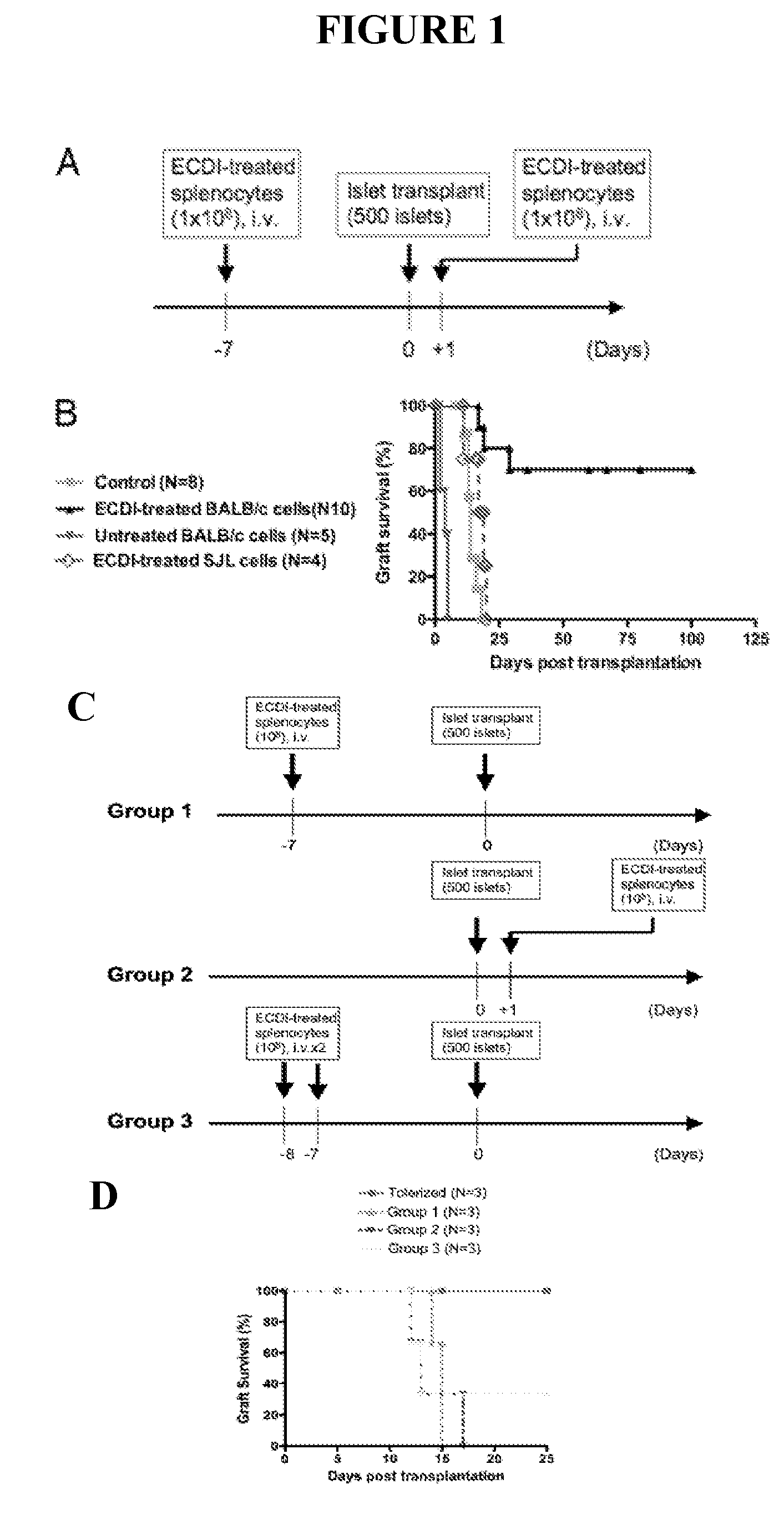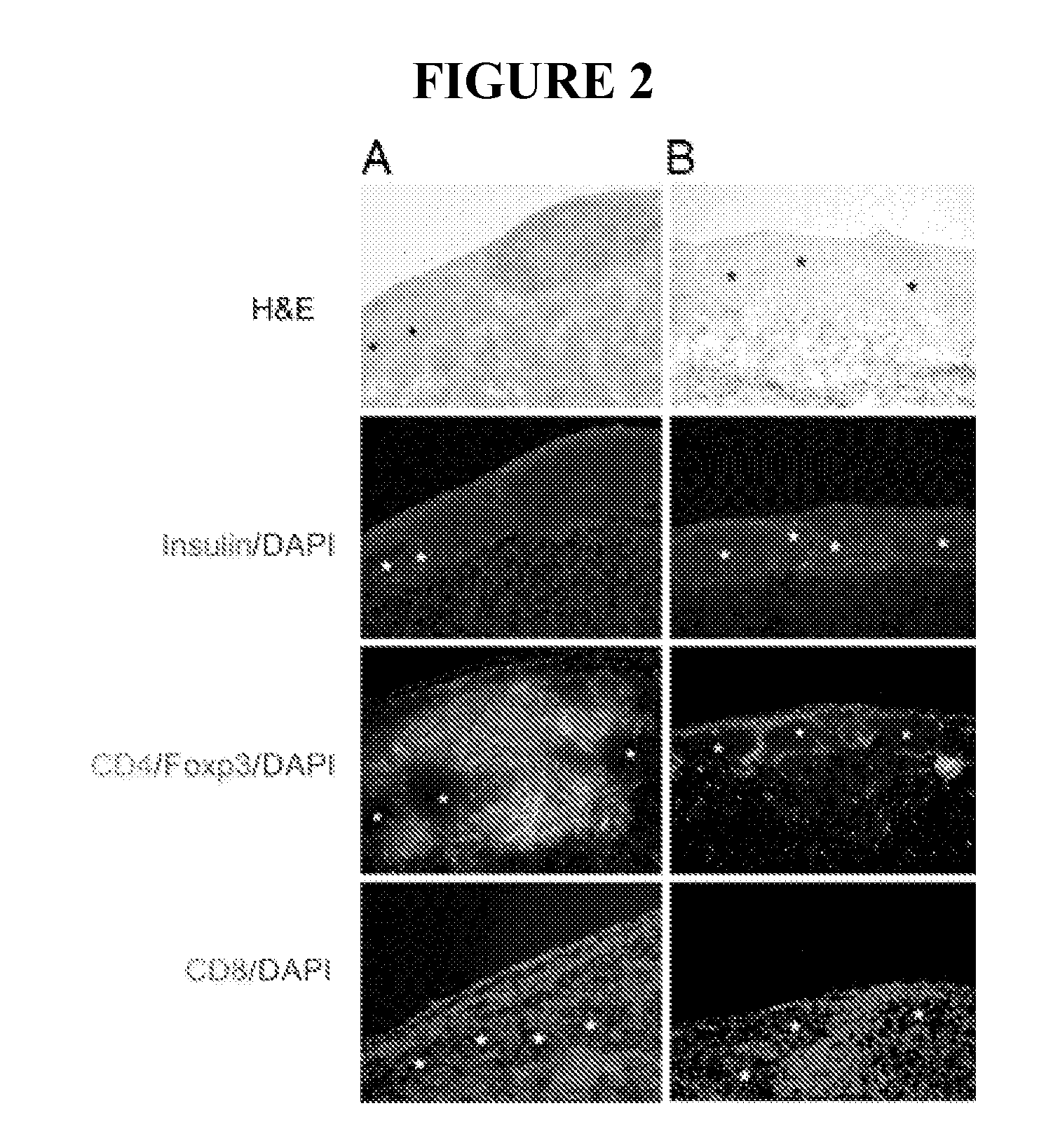Use of ecdi-fixed cell tolerance as a method for preventing allograft rejection
a technology of ecdi-fixed cells and tolerance, which is applied in the direction of biocide, drug composition, unknown materials, etc., can solve the problems of significant toxicities of antibodies, and achieve the effect of inducing donor-specific toleran
- Summary
- Abstract
- Description
- Claims
- Application Information
AI Technical Summary
Problems solved by technology
Method used
Image
Examples
example 1
ECDI-Treated Donor Splenocyte Infusions Induce Indefinite Donor-Specific Tolerance in Allogeneic Donor Cell Transplantation
[0054]This example describes the use of ECDI treated donor splenocytes to induce donor specific tolerance to islet cell transplantation in a recipient.
Materials and Methods
Mice.
[0055]Eight- to 20-week-old male BALB / c (H2d) and C57BL / 6 (H2b) mice and male PD-L1− / − mice on C57BL / 6 background were used in experiments conducted during development of embodiments of the present invention. All mice were housed under specific pathogen-free conditions at Northwestern University (NU). Protocols were approved by the NU Institutional Animal Care and Use Committee.
[0056]Antibodies.
[0057]APC-conjugated anti-CD25 (PC61) and FITC-conjugated anti-CD25 (7D4), anti-CD4 (GK1.5), and PE-conjugated anti-CD4 (L3T4; GK1.5) were from BD Biosciences. PE-conjugated anti-mouse Foxp3 (FJK-16a) was from eBiosciences. PC61 antibody (rIgG1, given at 0.5 mg per mouse every other day for two dos...
example 2
ECDI-Treated Splenocytes Carrying Male CD4 Epitopes Confer Histocompatability Y Chromosome Antigen Transplant Protection
Materials and Methods
Mice
[0087]Age-matched male and female C57BL / 6 (B6) mice and homozygous OT-II mice used for experiments conducted during development of embodiments of the present invention were housed in the Center for Comparative Medicine in sterile microisolator cages with ad libitum access to water and chow.
[0088]Splenocytes (SPs) were coupled to antigens in the presence of 30 mg / ml ECDI and 1 mg / ml peptide (Miller et al. 1979. J. Exp. Med. 149: 758-773; herein incorporated by reference in its entirety). For tolerance induction to male antigens in B6 females, 108 antigen-SPs were administered i.v. for 7 d and again 3 h prior to engraftment. B6 females received antigen-SP coupled to either the CD4 epitope found in male antigen (Dby:NAGFNSNRANSSRSS) or two CD8 epitopes (Uty:WMHHNMDLI, Smcy:KCSRNRQYL) added at equimolar ratios. Tolerance in O...
PUM
 Login to View More
Login to View More Abstract
Description
Claims
Application Information
 Login to View More
Login to View More - R&D
- Intellectual Property
- Life Sciences
- Materials
- Tech Scout
- Unparalleled Data Quality
- Higher Quality Content
- 60% Fewer Hallucinations
Browse by: Latest US Patents, China's latest patents, Technical Efficacy Thesaurus, Application Domain, Technology Topic, Popular Technical Reports.
© 2025 PatSnap. All rights reserved.Legal|Privacy policy|Modern Slavery Act Transparency Statement|Sitemap|About US| Contact US: help@patsnap.com



